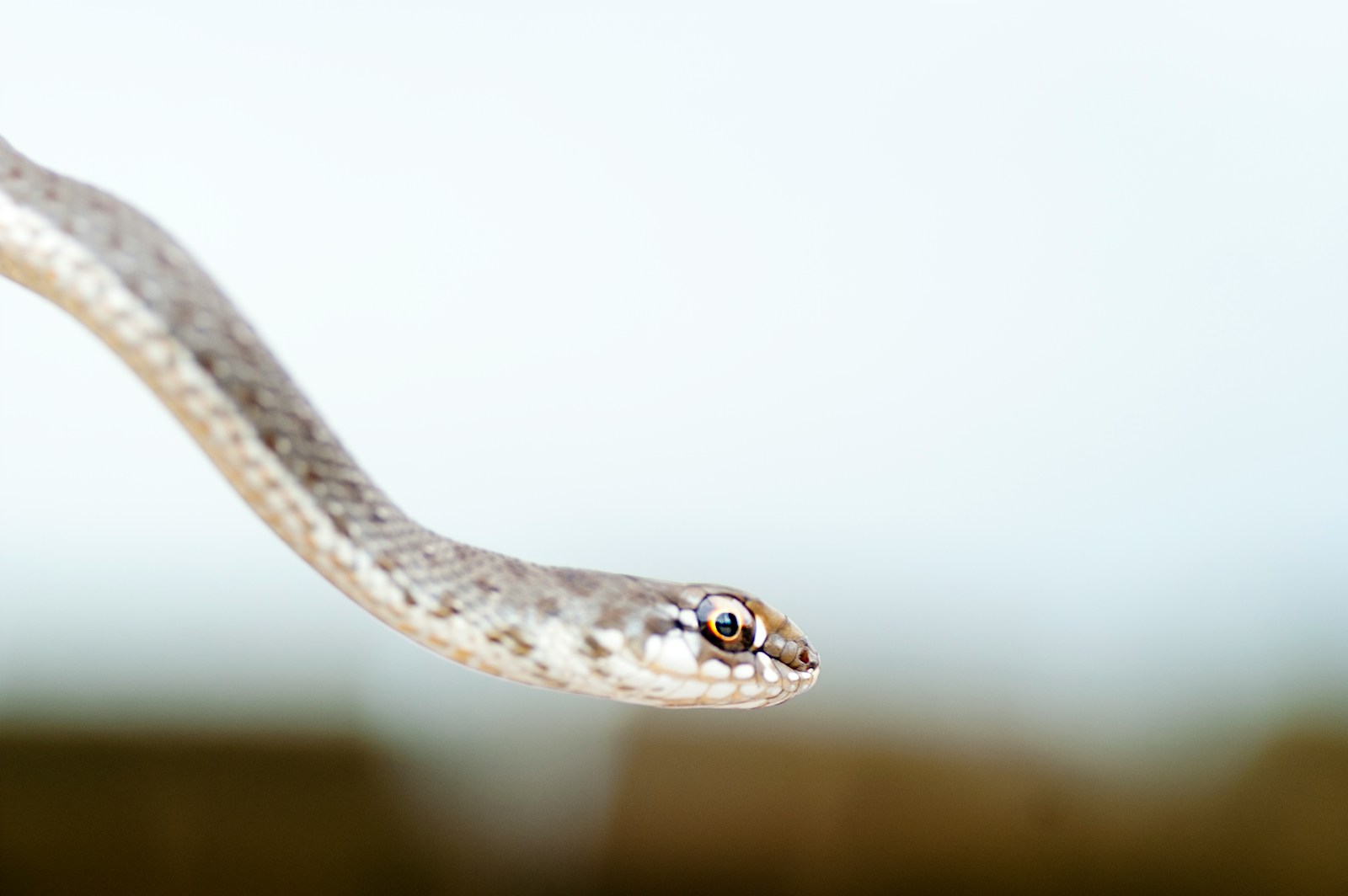The natural world is full of remarkable adaptations and abilities that continue to amaze scientists and nature enthusiasts alike. Among these, the capacity of certain animals to twist and contort their bodies mid-air represents one of evolution’s most spectacular achievements. These aerial acrobats have developed specialized anatomy and neuromuscular systems that allow them to rotate, flip, and twist with precision while airborne. From mammals to reptiles and even insects, the ability to manipulate body position during jumps or falls has evolved independently across different animal groups, serving various survival purposes from hunting to evading predators. This article explores the fascinating world of animals that can twist mid-air with ribbon-like flexibility, examining their unique adaptations, the physics behind their movements, and the evolutionary advantages these abilities confer.
The Physics Behind Mid-Air Twisting
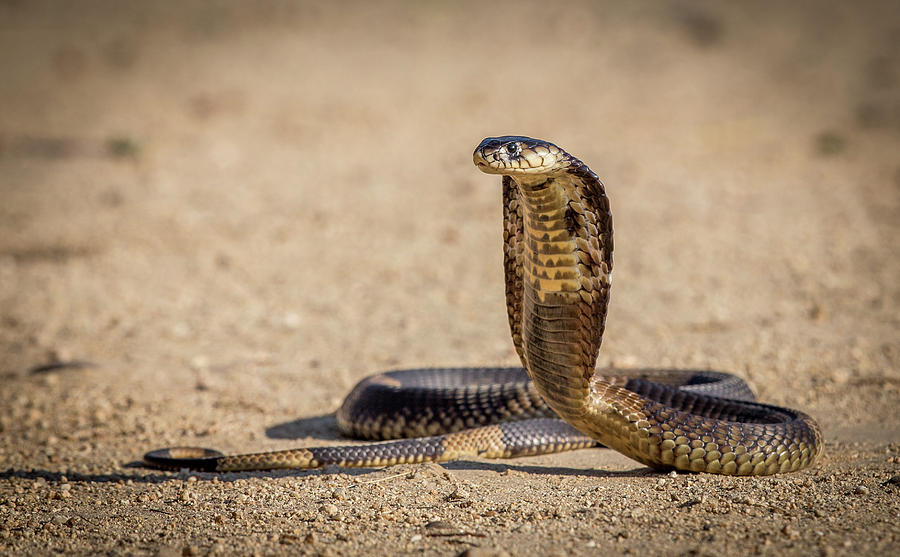
The ability to twist in mid-air depends on sophisticated biomechanical principles that these animals have mastered through evolution. At the core of this ability is angular momentum conservation, the same physical law that allows figure skaters to control their spinning speed by extending or tucking in their limbs. Animals that twist mid-air typically initiate rotation by pushing off asymmetrically from their launching point, creating torque that starts their body rotating. Once airborne, they manipulate their moment of inertia by redistributing body mass—extending or contracting limbs and tails in precise sequences. This redistribution allows them to control rotation speed and direction without any external force, essentially using their own body as a self-contained rotation system. The most impressive mid-air twisters have developed specialized musculature and neural control systems that enable split-second adjustments to their body configuration while airborne.
Cats: The Ultimate Aerial Acrobats
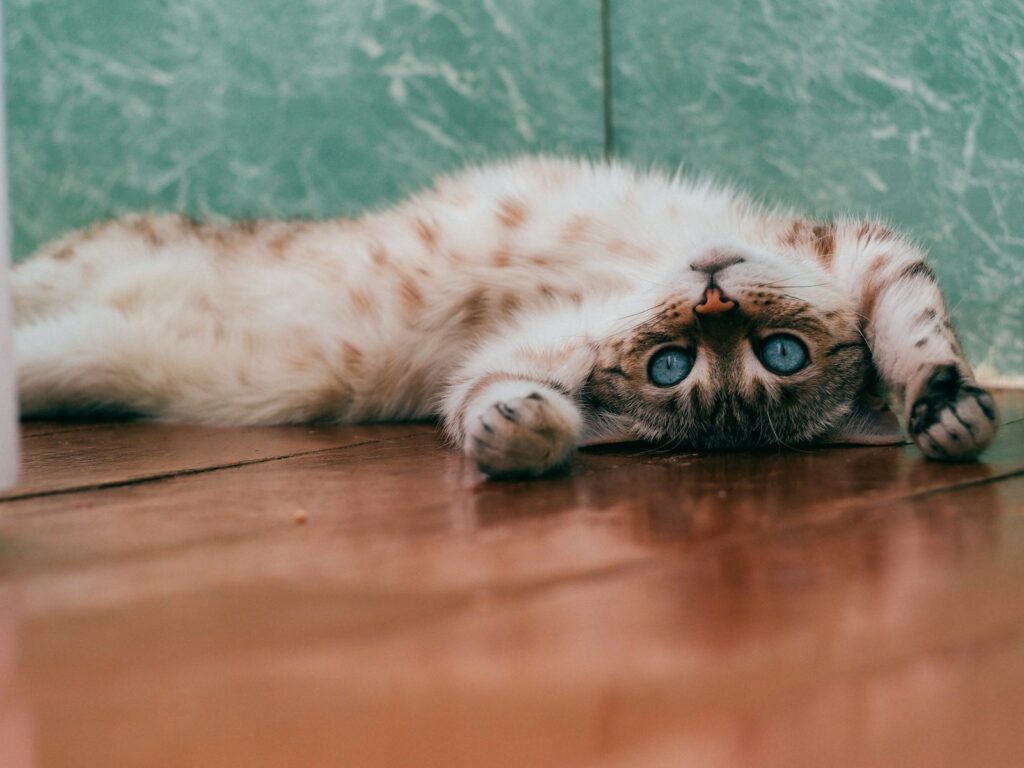
Cats have perhaps the most famous ability to twist mid-air, possessing what scientists call the “righting reflex.” This remarkable adaptation allows felines to reorient their bodies during falls to ensure they land on their feet, even when dropped from an upside-down position. The mechanics involve a sophisticated sequence: first, the cat bends at the waist and rotates the front half of its body using vision and the vestibular apparatus in the inner ear to identify which way is down. Then, it twists its rear half to align with the front, all while keeping its spine remarkably flexible. This sequence happens so quickly—often within 100 milliseconds after beginning a fall—that it appears simultaneous to human observers. Domestic cats can perform this maneuver when falling from heights as small as 30 centimeters, though paradoxically, they actually have better survival rates from higher falls, as this gives them more time to properly orient themselves and prepare for landing by spreading their limbs to reduce impact force.
Squirrels and Their Aerial Gymnastics
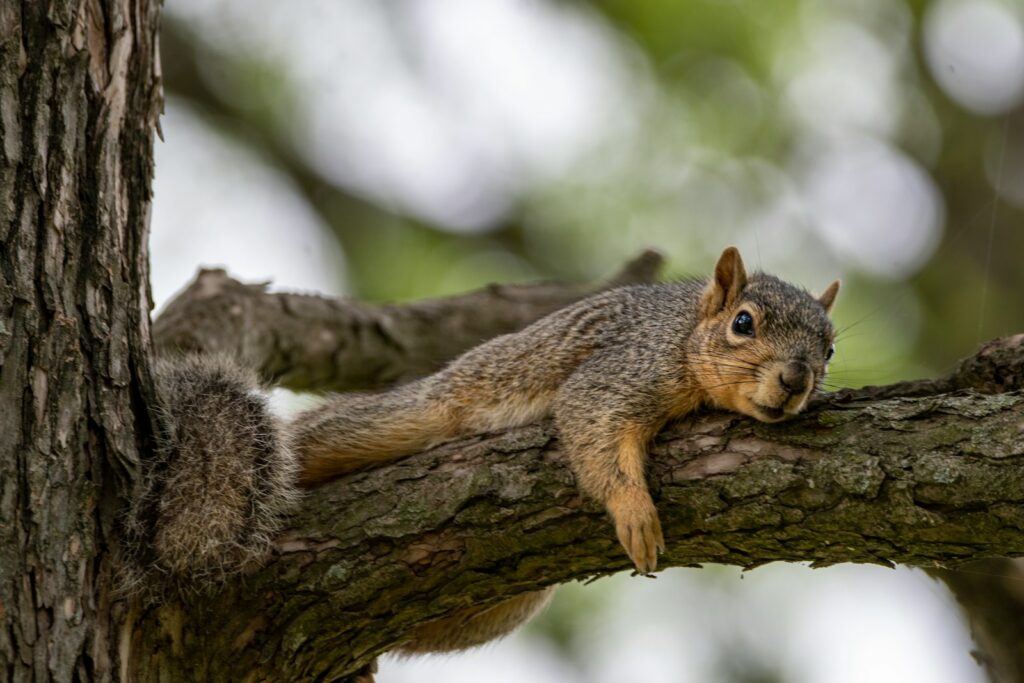
Squirrels demonstrate some of the most impressive mid-air control among mammals, especially considering they lack the specialized gliding membranes of their flying squirrel cousins. Research from the University of California, Berkeley has shown that squirrels can rotate their bodies up to 180 degrees in mid-leap, allowing them to land on tree trunks with their heads pointing upward regardless of their launch orientation. The secret to this ability lies in their remarkably flexible spine and powerful tail, which acts as both a counterbalance and a rudder during jumps. When a squirrel needs to change direction mid-air, it swings its tail in the opposite direction of the desired rotation, creating torque that rotates the body. High-speed camera studies have revealed that squirrels can make multiple adjustments during a single jump, processing visual information about their target and making split-second corrections to their trajectory. This extraordinary control not only helps squirrels navigate the three-dimensional maze of branches in their arboreal habitat but also allows them to escape predators with unpredictable movement patterns.
The Remarkable Twist of the Colugo
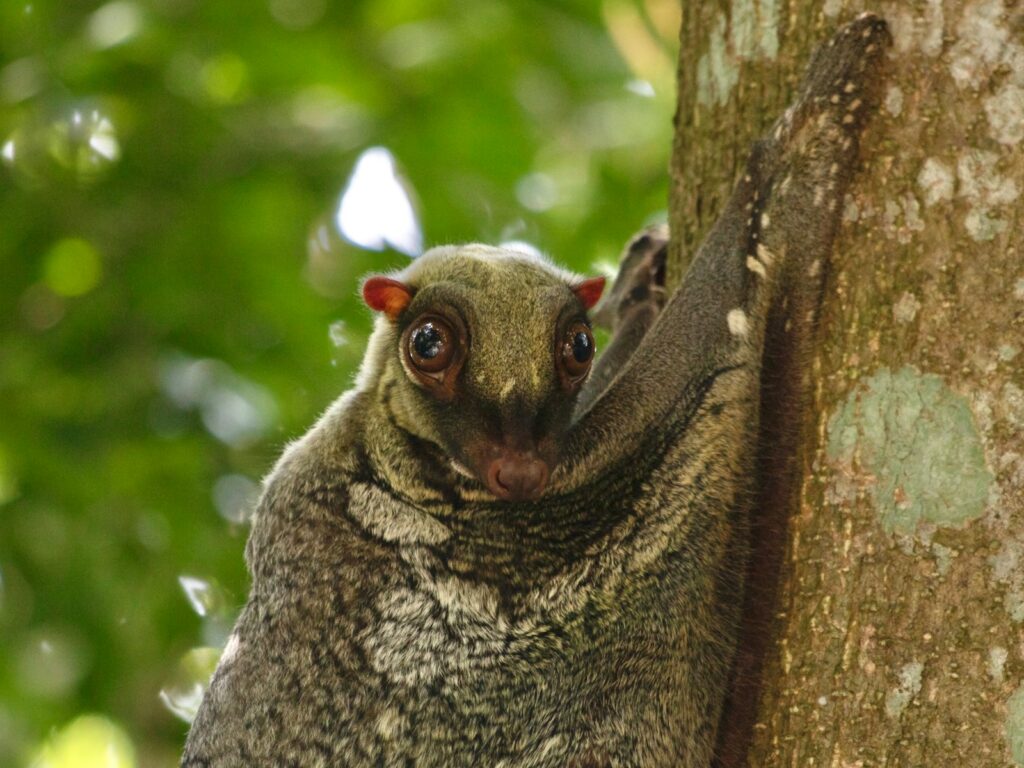
The colugo, often called the flying lemur (though it neither flies nor is a lemur), possesses perhaps the most ribbon-like mid-air twisting ability among mammals. This nocturnal glider from Southeast Asia has a specialized patagium—a membrane of skin that extends from its neck to its fingertips, wrists, toes, and the tip of its tail, essentially turning its entire body into one continuous gliding surface. What makes colugos extraordinary is their ability to perform complete 180-degree twists while gliding, effectively inverting their orientation without losing altitude or control. This maneuverability comes from the colugo’s unique anatomy, which includes extremely flexible shoulder and hip joints that allow the limbs to move in nearly any direction. The animal can adjust the tension in different sections of its patagium independently, creating asymmetrical lift that initiates and controls rotation. Researchers have observed colugos making these dramatic mid-air turns to avoid obstacles or adjust their landing approach, sometimes changing direction multiple times during a single glide that can cover distances over 100 meters.
Lizards That Twist: The Crested Gecko
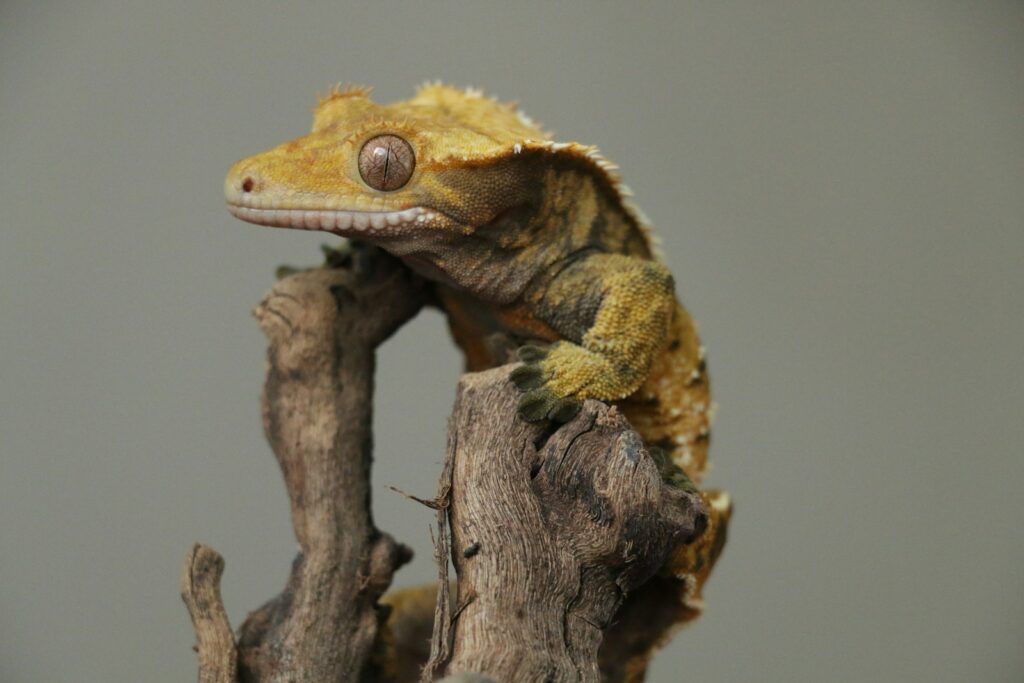
The crested gecko (Correlophus ciliatus) demonstrates remarkable mid-air control for a reptile, with an ability to twist its body like a ribbon when leaping or falling. Native to New Caledonia, these arboreal lizards have evolved a distinctive body plan that facilitates aerial rotation, including a relatively flat body, specialized foot pads for landing, and a prehensile tail that serves as a counterbalance. When a crested gecko jumps between branches or falls, it can rotate its body along multiple axes simultaneously, often performing complete 360-degree twists before landing. This rotation ability is particularly important since, unlike many lizards, the crested gecko cannot regenerate its tail if it’s lost—making safe landings crucial for survival. Interestingly, the gecko accomplishes these twists without the benefit of the inner ear structures that mammals use for spatial orientation, instead relying primarily on visual cues and proprioception (the sense of body position) to coordinate its aerial movements.
Flying Snakes: Masters of Aerial Ribboning
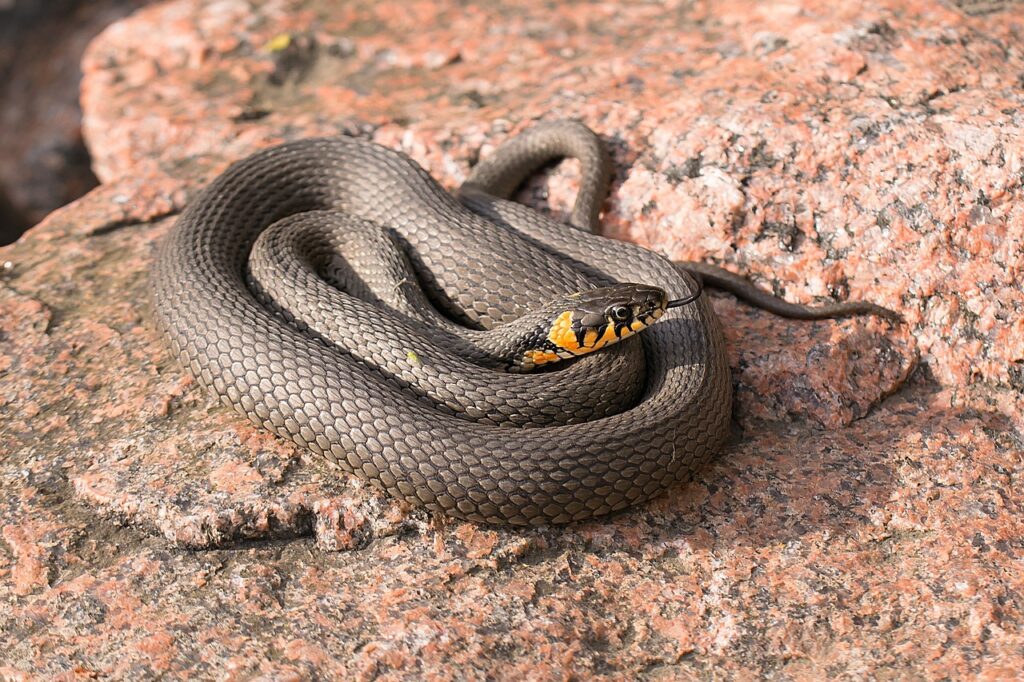
Perhaps no animal better embodies the concept of twisting like a ribbon in mid-air than the paradise-flying snake (Chrysopelea paradisi) of Southeast Asia. Despite having no limbs or wings, these remarkable reptiles can glide distances of up to 100 meters by launching themselves from tree branches. Upon becoming airborne, the snake transforms its body from a cylindrical shape to a flattened, concave ribbon by spreading its ribs and pulling in its ventral surface. This cross-sectional reshaping creates an airfoil that generates lift, while the snake simultaneously performs undulating, wave-like movements that resemble a ribbon twisting through the air. High-speed camera analysis has revealed that these undulations occur in both horizontal and vertical planes, creating complex three-dimensional patterns that not only stabilize the glide but also allow the snake to make directional adjustments. Research from Virginia Tech has shown that these snakes can even make turns of up to 90 degrees during glides, an astonishing feat of aerial control for an animal with no appendages to manipulate its orientation.
The Aerial Prowess of Sugar Gliders
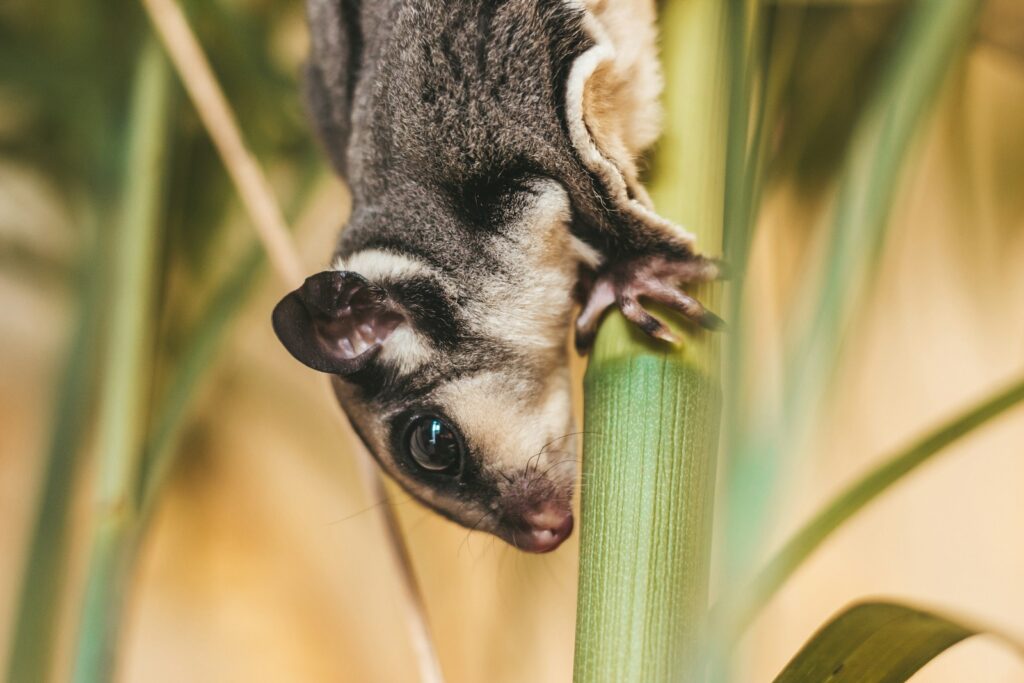
Sugar gliders (Petaurus breviceps) demonstrate exceptional mid-air twisting abilities that go far beyond simple gliding. These small marsupials from Australia and New Guinea possess a patagium—a membrane extending from wrist to ankle—that allows them to glide between trees, but their true aerial mastery lies in their capacity for complex rotational maneuvers while airborne. A sugar glider can initiate spins and twists by asymmetrically tensioning different regions of its gliding membrane and using its feather-like tail as a rudder. When changing direction mid-glide, these animals can execute ribbon-like twists of up to 180 degrees, momentarily resembling a twirling ribbon before stabilizing in their new orientation. This rotational control is crucial for their nocturnal lifestyle, allowing them to navigate dense forest canopies with precision even in low light conditions. Researchers have found that young sugar gliders develop these complex aerial skills through play behavior, progressively attempting more challenging glides and twists as they mature, showing that this remarkable ability involves both innate capability and learned skill.
Dragonflies: Insect Aerial Acrobats
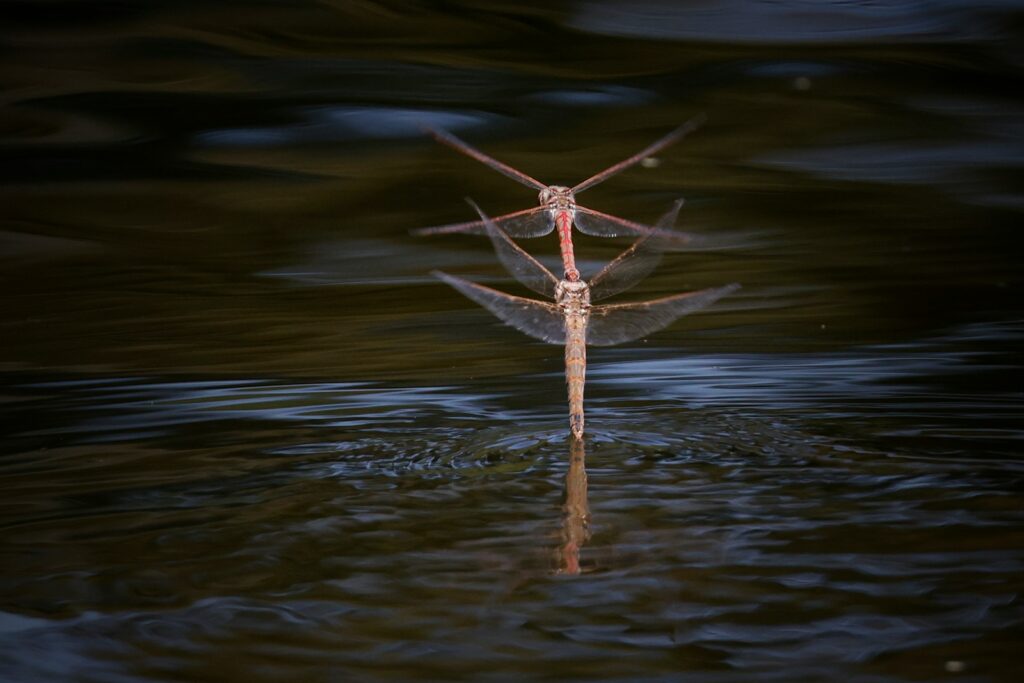
Among insects, dragonflies stand out as perhaps the most sophisticated aerial twisters, capable of ribbon-like rotations that put human aircraft to shame. These ancient insects can manipulate their four wings independently, with each wing controlled by separate muscle groups, giving them unparalleled aerial maneuverability. High-speed photography has captured dragonflies performing complete 360-degree barrel rolls in mid-flight, twisting their slender bodies along their longitudinal axis while maintaining forward momentum. Even more impressive is their ability to fly backwards, change direction instantaneously, and hover with precision. The dragonfly’s compound eyes provide nearly 360-degree vision, feeding visual information to a nervous system specialized for flight control, allowing split-second adjustments to wing movements. Research has shown that dragonflies intercept prey with a 95% success rate, higher than any other predator, largely due to their ability to calculate interception courses and execute complex mid-air twists to adjust their approach angle—all within fractions of a second.
Dolphins: Oceanic Ribbon Dancers

Dolphins demonstrate that ribbon-like twisting isn’t limited to the air—these marine mammals perform some of the most elegant rotational maneuvers in the animal kingdom, though in water rather than air. Species like the spinner dolphin (Stenella longirostris) are famous for leaping high above the water surface and performing multiple rapid axial rotations, sometimes completing up to seven complete spins in a single jump. This spinning behavior requires extraordinary muscular control and spatial awareness, as the dolphin must initiate the spin underwater, maintain rotation while airborne, and then re-enter the water safely. The mechanics involve a powerful upward thrust followed by a precise twisting motion initiated by asymmetrical movements of the pectoral fins and subtle body contortions. Beyond being visually spectacular, these spins serve multiple purposes: they may dislodge parasites, communicate with other dolphins through the visual display and the sound created when re-entering the water, or simply represent play behavior that strengthens social bonds within the pod. Whatever the purpose, the dolphin’s ability to transform its streamlined body into a twisting ribbon showcases one of nature’s most beautiful examples of controlled aerial rotation.
Birds of Prey: Aerial Hunting Twists

Birds of prey such as falcons and hawks, exhibit some of the most precise mid-air twisting abilities in the avian world, particularly during hunting dives called stoops. The peregrine falcon, capable of diving speeds exceeding 240 mph, can make lightning-fast adjustments to its trajectory by asymmetrically adjusting its wings and tail, creating controlled twists that allow it to track and intercept maneuvering prey. What makes these aerial hunters remarkable is their ability to maintain visual focus on their target throughout complex rotational maneuvers, something they achieve with specialized neck muscles that stabilize their head position despite body rotation. High-speed camera studies have revealed that falcons often roll their bodies in mid-stoop, presenting their talons to the prey while twisting their torso in ribbon-like motions that maximize their strike effectiveness. These birds possess specialized air sacs and reinforced hollow bones that withstand the tremendous g-forces generated during their aerial twists, with some species experiencing forces that would cause a human to lose consciousness. The neural processing required for these hunting dives is equally impressive, as the falcon must continually calculate interception courses while accounting for its own velocity, the prey’s evasive movements, and environmental factors like wind—all while executing precise body rotations.
The Evolutionary Advantages of Mid-Air Twisting

The ability to twist like a ribbon in mid-air has evolved independently across multiple animal lineages, suggesting significant evolutionary advantages to this specialized motor control. For predators like falcons and dragonflies, rotational agility provides a hunting edge, allowing them to adjust their approach angle and respond to prey evasion tactics with split-second precision. For prey species like flying squirrels and colugos, the ability to change direction unpredictably while airborne significantly reduces capture probability, creating an evolutionary arms race of aerial maneuverability. In arboreal species, mid-air twisting abilities enable efficient navigation through complex three-dimensional environments, allowing animals to make use of fragmented habitats and exploit resources that would otherwise be inaccessible. Perhaps most fundamentally, rotational control during falls has evolved as a damage mitigation strategy—the cat’s righting reflex being the classic example of how the ability to reorient in mid-air can mean the difference between injury and survival. The neural and muscular adaptations that enable these abilities also tend to benefit animals in other movement contexts, creating positive selection pressure for increasingly sophisticated control systems governing spatial orientation and body configuration.
Biomimicry: Learning from Nature’s Twisters
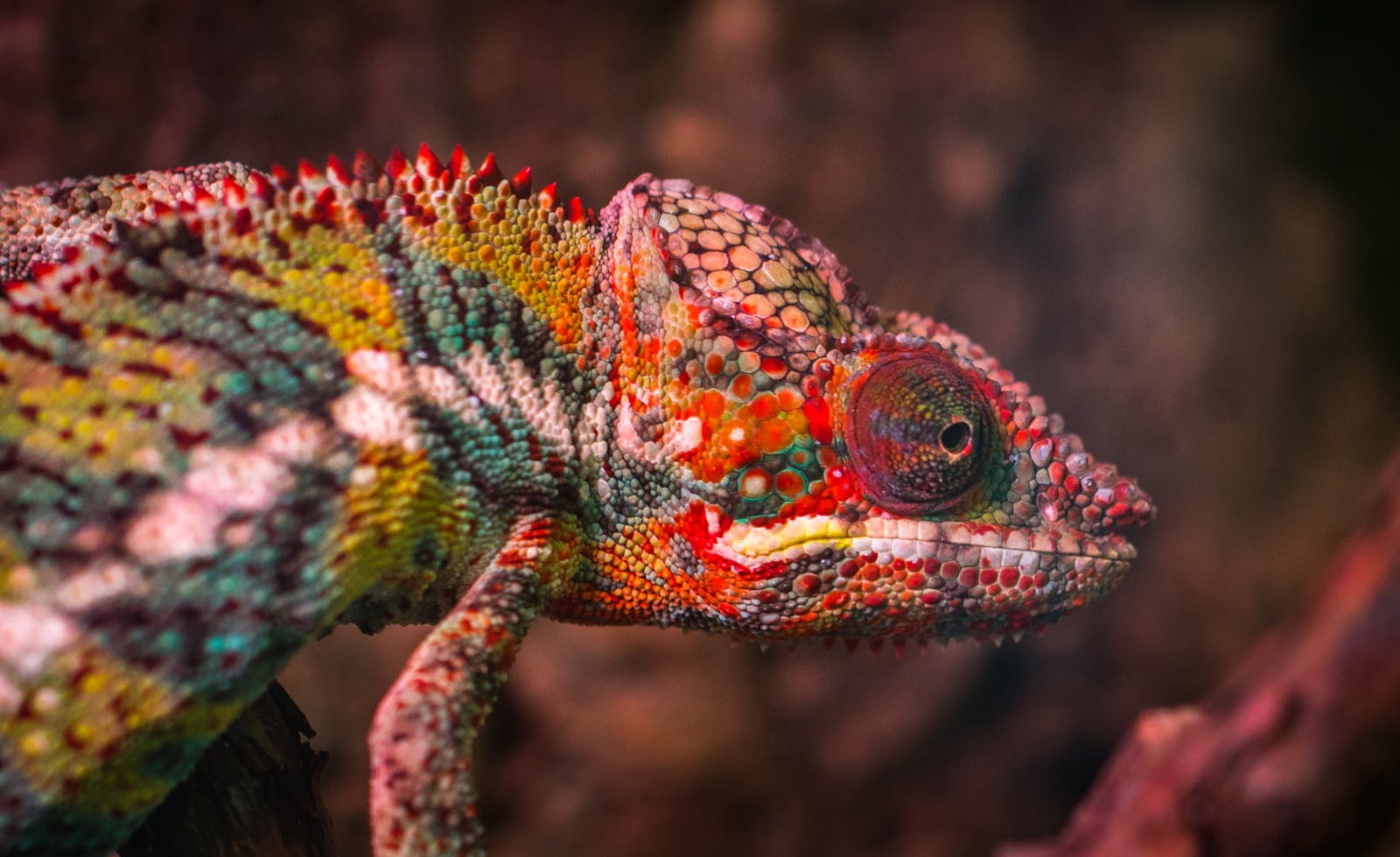
The remarkable mid-air twisting abilities of various animal species have not gone unnoticed by engineers and roboticists seeking to improve human technology. The field of biomimicry—designing systems based on biological principles—has drawn significant inspiration from animals that can twist like ribbons in mid-air. Robotics researchers at the University of California, Berkeley, have developed robots that can right themselves in falls by mimicking the sequential rotation strategy of cats, potentially improving the resilience of search-and-rescue robots operating in disaster zones. The undulating movements of flying snakes have informed the development of snake-inspired robots that can navigate complex environments by twisting their segmented bodies in ribbon-like patterns. Perhaps most prominently, the field of aerial robotics has benefited enormously from studying dragonfly flight mechanics, leading to drones with improved maneuverability and stability in turbulent conditions. The military and aerospace industries have taken particular interest in the peregrine falcon’s ability to maintain stable vision during high-speed aerial twists, developing flight systems and camera stabilization technology based on these biological principles. As our understanding of these animals’ biomechanics deepens, we can expect even more sophisticated technologies that harness the elegance and efficiency of nature’s mid-air ribbon dancers.
Conclusion
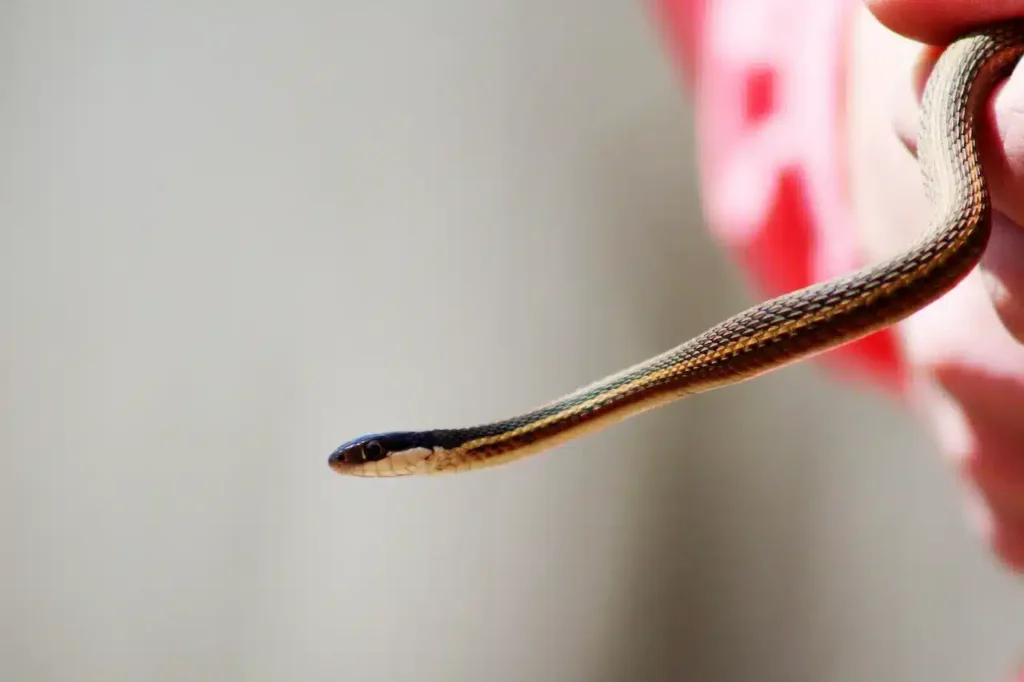
The ability to twist mid-air like a ribbon represents one of nature’s most elegant solutions to the challenges of movement through three-dimensional space. From the split-second righting reflex of falling cats to the elaborate aerial dances of spinner dolphins, these remarkable adaptations showcase the incredible diversity of evolutionary pathways to similar functional outcomes. What unites these seemingly disparate species is the sophisticated integration of sensory information, neural processing, and specialized anatomy that enables precise control of body orientation without external support. As we continue to study these biological marvels, we not only deepen our appreciation for the complexity and beauty of natural adaptation but also discover principles that can inform technological innovation. The next time you witness a cat gracefully landing on its feet or a dragonfly executing a perfect mid-air twist, remember you’re observing the result of millions of years of evolutionary refinement—nature’s own aerial ballet performers, twisting through the world like living ribbons.

